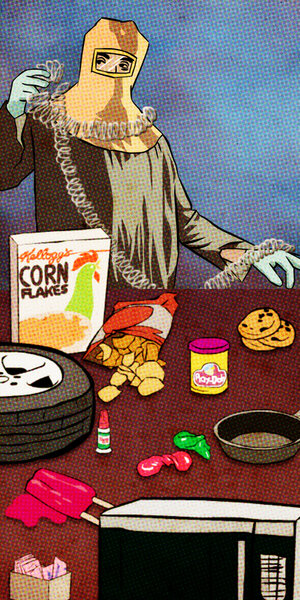Roy Plunkett invented Teflon while trying to make a better refrigerator.
When the DuPont chemist was only 27 years old, he had a big idea. Plunkett wanted to combine a specific gas with hydrochloric acid. He gathered the desired gas (tetrafluoroethylene) but wasn't quite ready to start experimenting. So he cooled and pressurized the gas in canisters overnight. But when he returned the next day, the gas was gone. The canisters weighed the same amount as when they were full, but nothing came out. Where did all the gas go?
Confused, Plunkett cut the canisters in half. The gas had solidified on the sides, creating a slick surface.
"Rather than discard the apparent mistake, Plunkett and his assistant tested the new polymer and found that it had some very unusual properties: it was extremely slippery as well as inert to virtually all chemicals, including highly corrosive acids," writes DuPont in its corporate history. "The product, trademarked as Teflon in 1945, was first used by the military in artillery shell fuses and in the production of nuclear material for the Manhattan Project."
While Plunkett invented Teflon, he didn't come up with the idea of using it for cooking. About a decade after Plunkett sawed those canisters in half, a French engineer named Marc Grégoire introduced "Tefal" pans, the first to be lined in Teflon. The idea came from his wife. Before Tefal, Grégoire used Teflon on his fishing tackle to prevent tangling. But his wife realized that the nonstick surface would be perfect for cookware.







